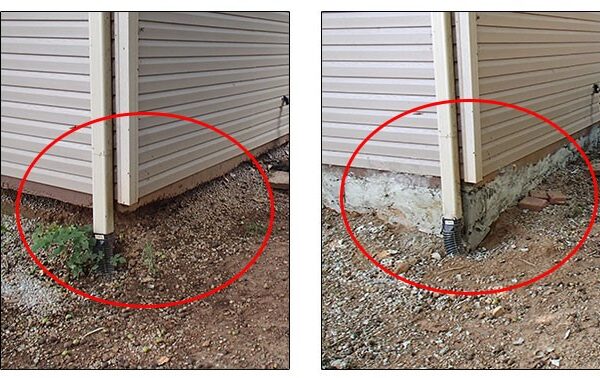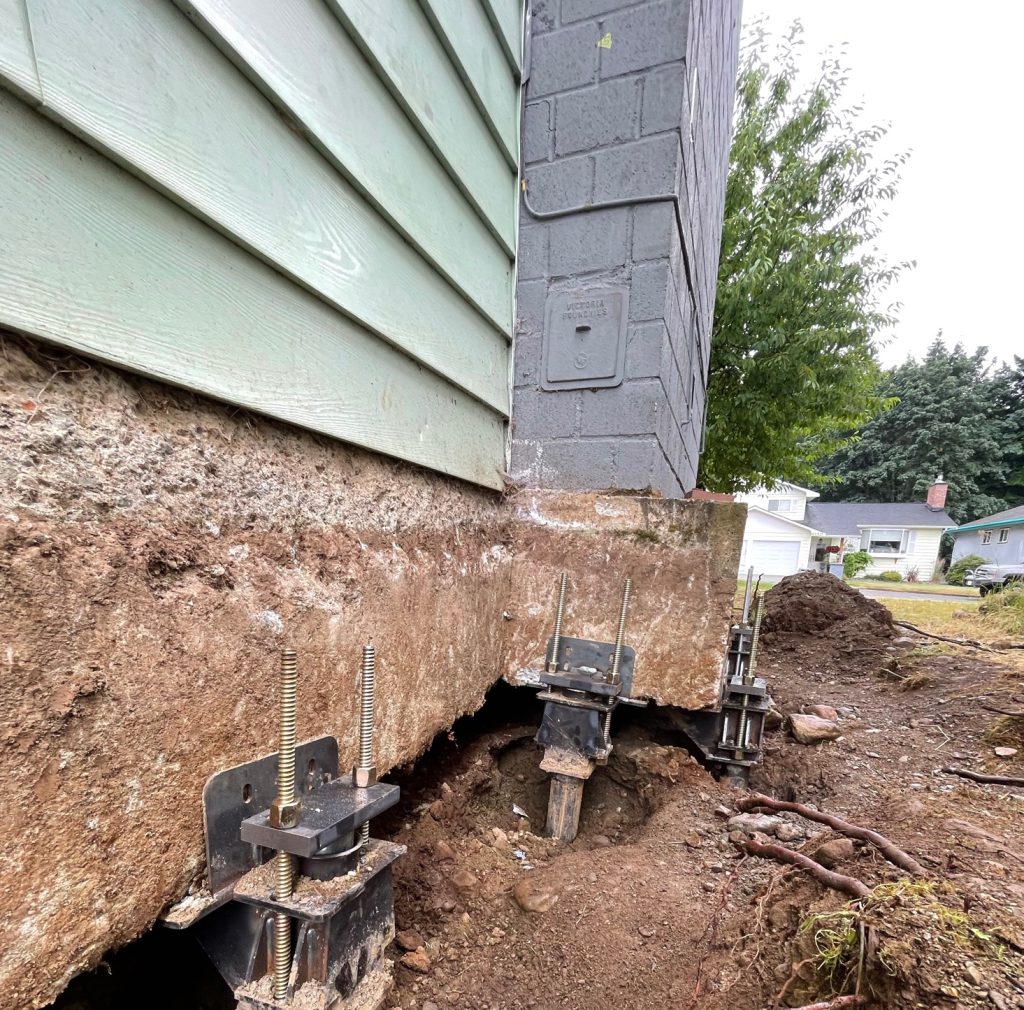Why Foundation Repair OKC is Crucial for Preserving Your Property's Stability
Why Foundation Repair OKC is Crucial for Preserving Your Property's Stability
Blog Article
Discovering Various Techniques of Foundation Repair for Various Soil Kinds
Structure fixing is an essential facet of maintaining architectural stability, especially when taking into consideration the varied obstacles presented by different dirt kinds. The intricacy of soil behavior under varying problems demands a customized technique to fix, ensuring optimal solutions such as helical piers for unstable dirts or chemical cements for natural layers. The question stays: how do we figure out the most effective approach for each unique circumstance? Understanding the interaction between soil characteristics and repair service strategies is important, yet there is more to uncover in the pursuit for sustainable options. What variables really determine the choice of technique?
Comprehending Dirt Kinds
Soil types play a critical duty in the stability and longevity of building foundations, making it vital for house owners and building experts to comprehend their attributes and habits. The interaction in between dirt and foundation can establish the structural integrity of a building. There are numerous dirt types, each with distinct physical homes that impact how structures are created and preserved.
Granular soils, such as sand and gravel, offer good water drainage and are typically considered steady. They have high load-bearing capacities, which can support larger structures. These dirts can move if not compacted appropriately, leading to prospective negotiation issues. In comparison, natural soils like silts and clays display different actions. These soils tend to maintain moisture, and their load-bearing ability can vary dramatically with modifications in moisture material.
Rocky dirts, known for their strength and security, offer outstanding assistance for foundations however might require specific tools for excavation. On the other hand, fertile soils, which are a balanced mixture of clay, silt, and sand, typically give beneficial problems for structure support due to their modest drain homes.

Understanding these dirt kinds is critical for selecting appropriate foundation repair approaches, making certain the resilience and safety and security of frameworks gradually.
Difficulties With Extensive Clay
Among the various dirt types, extensive clay presents unique obstacles for structure stability due to its tendency to undertake considerable volume adjustments with wetness variant. This type of dirt swells when damp and contracts when completely dry, which can put in considerable stress on structures. These fluctuations can lead to structure breaking, heaving, and settlement problems, posturing substantial threats to the structural honesty of buildings.
The challenges with expansive clay are intensified by its plasticity index, which gauges the soil's capacity to alter form and volume. A high plasticity index shows higher potential for motion, increasing the probability of damage to structures. This is particularly troublesome in areas experiencing extreme or constant weather modifications, where cycles of damp and dry problems are common.
In addition, the depth of expansive clay layers can vary, complicating the assessment and planning of suitable structure repair service approaches. The unforeseeable nature of its activity demands specialized design solutions to mitigate dangers. Additionally, expansive clay can affect utility lines, sidewalks, and driveways, additionally complicating repair service initiatives. These complexities call for a complete geotechnical analysis to guarantee effective foundation repair service approaches are applied, emphasizing the value of dealing with expansive clay challenges with knowledge and care.
Solutions for Sandy Soils
Sandy dirts, defined by their huge particle size and low cohesion, present unique obstacles for structure security due to their tendency for shifting and disintegration. These homes require specialized foundation repair methods to make certain architectural stability. One reliable option is the use of deep foundation systems such as helical piers or driven heaps. By anchoring the structure to deeper, much more steady soil layers, these systems can i thought about this supply the essential assistance to counteract the moving nature of sandy soils.
An additional recommended strategy is the application of soil stablizing methods. Chemical grouting, as an example, involves injecting a supporting agent into the soil, which improves cohesion and decreases leaks in the structure. This process aids to strengthen the sandy substratum, thus lessening the risk of disintegration and movement.
Furthermore, setting up correct drain systems is vital in sandy soil problems. Ensuring ample drain can prevent water buildup around the foundation, which often exacerbates erosion and dirt variation. Strategies such as French drains or surface grading can be used to direct water away from the structure border.
Dealing With Working Out in Loamy Soils
Loamy dirts, recognized for their well balanced mix of silt, sand, and clay, supply a fertile base for several frameworks however can sometimes cause foundation settling because of their one-of-a-kind structure. This balanced texture gives superb water drainage and nutrient retention, making it excellent for farming and landscape design. This exact same attribute can end up being bothersome for structures, as shifts in dampness web content can cause the dirt to increase or contract, leading to resolving.
Attending to clearing up in fertile soils requires a diverse approach. Accurate dirt testing is crucial to figure out the certain structure and wetness content of the loam. Once information is gathered, implementing proper drainage remedies click site is vital to keep constant moisture levels, thus lowering the threat of soil contraction or expansion. French drains or surface grading are effective approaches to reroute water away from the structure.

Cutting-edge Repair Service Methods
In the world of structure repair, cutting-edge strategies are continually being established to attend to the facility challenges presented by numerous soil problems. As dirt types vary considerably in their architectural residential properties, conventional methods may not always are adequate. The advent of new modern technologies in foundation repair work supplies much more tailored options, guaranteeing security and durability.
One remarkable advancement is the use of helical piers, which are especially effective in unpredictable or expansive soils (foundation repair oklahoma city ok). These piers are screwed into the ground up until they get to a stable layer of dirt, offering strong assistance for the structure above. This technique minimizes interruption and is versatile to various soil kinds, making it a functional service
One more cutting-edge strategy is the application of polyurethane foam injection. This technique entails injecting high-density polyurethane foam below the structure to load spaces and maintain the structure. It is a less invasive option to typical foundation, using fast installation with minimal disturbance to the surrounding location.
In addition, dirt stabilization methods, such as the use of chemical cements, have gotten grip. These substances enhance dirt stamina and reduce permeability, avoiding future moving. Jointly, these ingenious fixing strategies give efficient options for the varied obstacles postured by differing dirt problems.
Verdict

Structure repair work is an essential aspect of preserving architectural honesty, especially when thinking about the varied challenges positioned by various dirt kinds (foundation repair okc). The complexity of soil actions under differing problems necessitates a customized method to repair, making sure optimum solutions such as helical piers for unstable soils or chemical grouts for cohesive layers. By anchoring the foundation to deeper, a lot more secure dirt layers, these systems can give the essential support webpage to counteract the shifting nature of sandy soils
Foundation repair work needs cautious factor to consider of dirt kinds to make certain security and longevity. Chemical grouts enhance dirt strength and reduce permeability in natural dirts.
Report this page